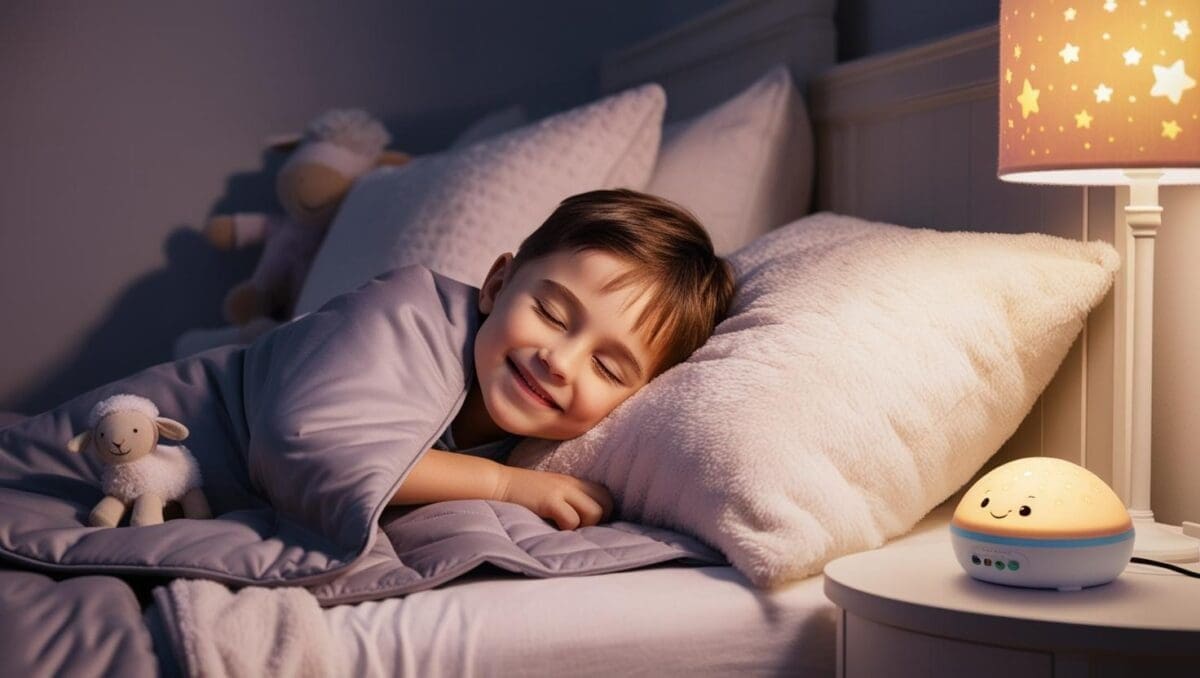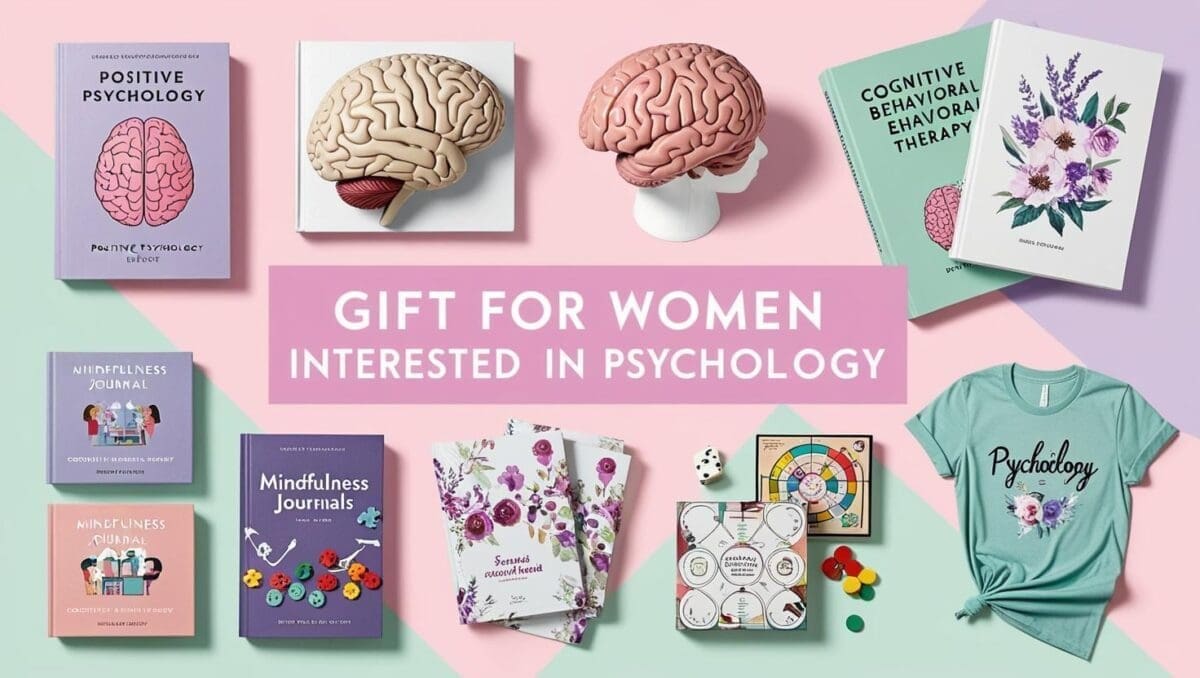Ever caught yourself doodling on the corner of a notebook during a meeting or class? Maybe you’ve absentmindedly drawn little shapes or scribbles while talking on the phone. Guess what? That tiny act of creativity is doing more for your mental health than you might think!
Creative activities—whether it’s painting, crafting, or digital drawing—are incredible tools for reducing anxiety, boosting mood, and helping you feel more present in the moment. And here’s the best part: You don’t have to be a professional artist to benefit from them. Creativity is for everyone!
In this article, we’ll explore why creative activities are powerful mental health tools, break down a few fun ideas to try, and give you simple ways to get started today.
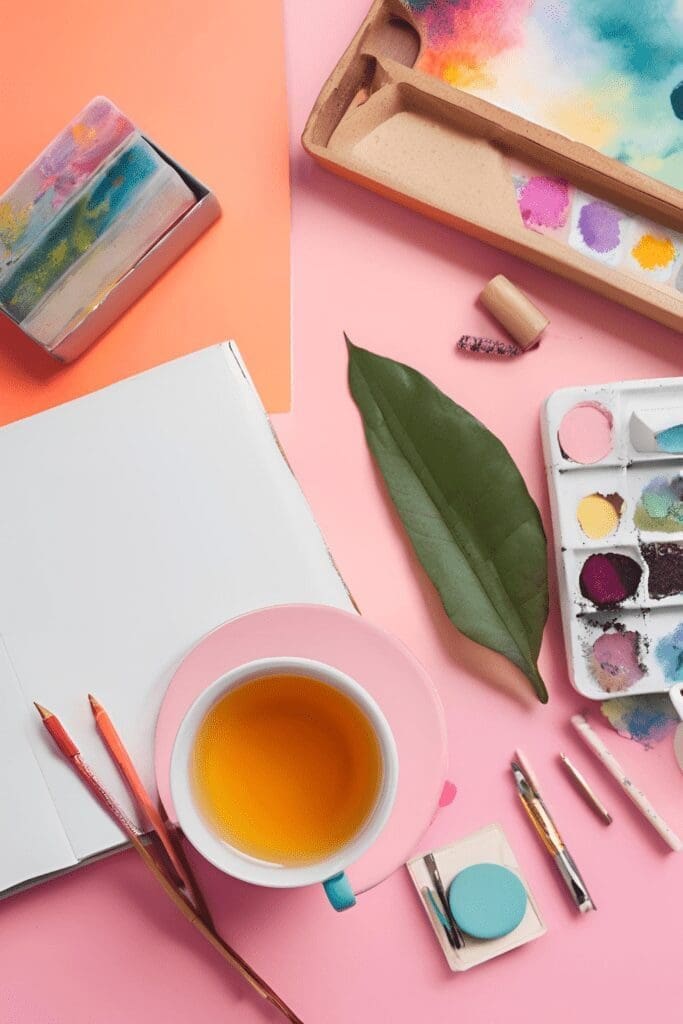
Why Creative Activities Are Great for Mental Health
1. Creativity Reduces Anxiety and Stress
When you’re focused on a creative activity, your mind naturally shifts away from stressful thoughts and anxious feelings. It works similarly to meditation—your brain enters a “flow state,” where you’re fully absorbed in the moment. Studies show that engaging in artistic activities can lower cortisol levels, the stress hormone, leaving you feeling calmer and more relaxed.
2. Art Boosts Dopamine (a.k.a. the “Feel-Good” Chemical)
Ever noticed how happy kids get when they’re finger-painting or coloring? That’s because artistic expression triggers the brain’s reward system! Creative activities increase dopamine, the neurotransmitter responsible for pleasure, motivation, and emotional well-being.
3. Expressing Yourself Through Art Helps Process Emotions
Sometimes, emotions feel too overwhelming to put into words. That’s where art becomes a powerful tool for emotional release. Whether through painting, drawing, or crafting, self-expression allows you to externalize your feelings in a way that talking alone may not.
4. Creativity Increases Mindfulness
Ever gotten lost in a craft project and lost track of time? That’s mindfulness in action! Art helps you stay present, focused, and engaged in the now, reducing overthinking and mental fatigue.
Fun Creative Activities to Try for Mental Health
Not sure where to start? Here are some simple, stress-free creative activities that can help improve your mental health. No artistic talent required—just an open mind!
1. Watercolor Painting: Let the Colors Flow
Watercolors are gentle, fluid, and completely forgiving, making them perfect for beginners. You don’t need to create a masterpiece—just playing with colors and watching them blend on the page can be incredibly soothing.
How to Get Started:
- Get a basic watercolor set (even an inexpensive one works fine).
- Use thick watercolor paper to prevent the paint from bleeding through.
- Try abstract painting—simply let colors blend and flow without worrying about details.
- Experiment with painting emotions—choose colors based on how you feel and let them guide your brushstrokes.
Reflection Prompts
As you engage in your watercolor painting activity, consider these prompts to reflect on your creative journey and its impact on your mental health:
- Emotional Connection:
- What emotions surfaced as you watched the colors blend on the page?
- How did your mood influence the colors you chose?
- Creative Process:
- How did letting go of perfection change your approach to the activity?
- What did you discover about your creative style when you focused solely on expression rather than outcome?
- Mindfulness and Relaxation:
- In what ways did the act of painting help you relax or feel more present?
- Did you notice any physical or mental shifts (e.g., a reduction in stress) as you painted?
- Self-Discovery:
- What insights about yourself emerged during the creative process?
- How might this experience influence how you handle stress or express your feelings in the future?
- Future Creativity:
- Would you try another creative activity, or perhaps experiment with different techniques within watercolor painting?
- What changes, if any, do you plan to make in your creative routine to further support your mental well-being?
Use these prompts as journaling questions or as mental checkpoints during your painting session. They can help deepen your awareness of the creative process and reinforce the positive mental health benefits of engaging in art.
Mental Health Benefits:
✅ Encourages relaxation and reduces stress
✅ Allows for emotional expression
✅ Engages the mindfulness state
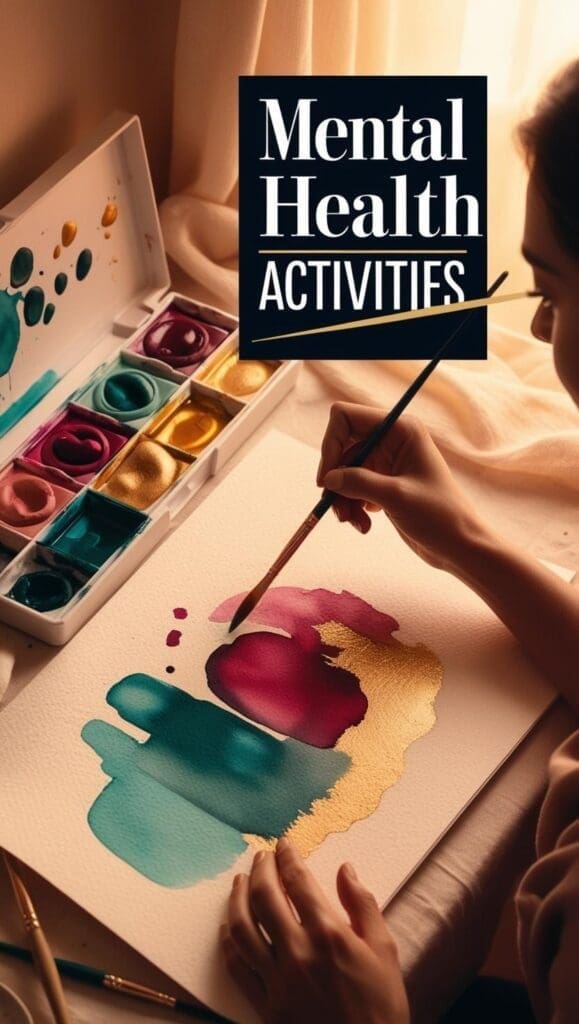
2. Digital Drawing: Art Without the Mess
Not a fan of traditional painting? Try digital drawing! Apps like Procreate, Adobe Fresco, or even free options like Ibis Paint let you create stunning artwork without any cleanup.
How to Get Started:
- Download a drawing app (Procreate for iPad, Krita for PC, or Ibis Paint for smartphones).
- Use a stylus or even your finger to create simple sketches.
- Start with doodling shapes, patterns, or fun designs—no need for perfection!
- Try color therapy by using calming colors like blues and greens.
Mental Health Benefits:
✅ A stress-free way to explore creativity
✅ No supplies needed—just a tablet or phone
✅ Easily erase, undo, and experiment without pressure

3. DIY Vision Board: Manifest Your Dreams
A vision board is a dynamic tool to bring your goals, dreams, and inspirations to life. By combining images, words, and affirmations, you create a visual reminder of what you’re striving to achieve. This creative process not only clarifies your aspirations but also fuels your motivation and sense of direction.
Getting Started:
- Gather Your Materials: Choose a poster board or corkboard as your canvas.
- Curate Your Content: Collect images, quotes, and words from magazines, Pinterest, or printouts that resonate with your dreams.
- Design Your Layout: Arrange your chosen pieces in a way that feels both inspiring and personal.
- Display with Purpose: Place your vision board in a spot where you can see it daily—whether in your bedroom, workspace, or even in a journal.
Mental Health Benefits:
- Strengthens your sense of purpose by setting clear intentions
- Boosts motivation and provides a tangible direction
- Fosters positivity and self-empowerment through regular visualization
Reflection Prompts
As you craft your vision board, consider these questions to reflect on your creative process and its effect on your mental well-being:
- Clarifying Your Dreams:
- Which images and words resonate most with your personal aspirations?
- How does assembling these elements help clarify what you truly desire?
- Creative Expression:
- In what ways did designing your vision board allow you to express your individuality?
- Did the process reveal any new insights about your passions or goals?
- Motivation and Direction:
- How does seeing your vision board every day influence your motivation?
- What specific goals or intentions became clearer as you arranged your board?
- Emotional Impact:
- How did the act of creating your vision board make you feel?
- Did you notice any shifts in your mood or mindset during or after the activity?
- Future Aspirations:
- What steps might you take next to move closer to the dreams represented on your board?
- How can this creative practice be adapted or expanded to support other areas of your life?
Use these prompts as a journaling guide or mental checkpoints throughout your vision board creation. They can help you tap into the transformative power of visualization and reinforce the positive mental health benefits of aligning your creative expression with your personal aspirations.
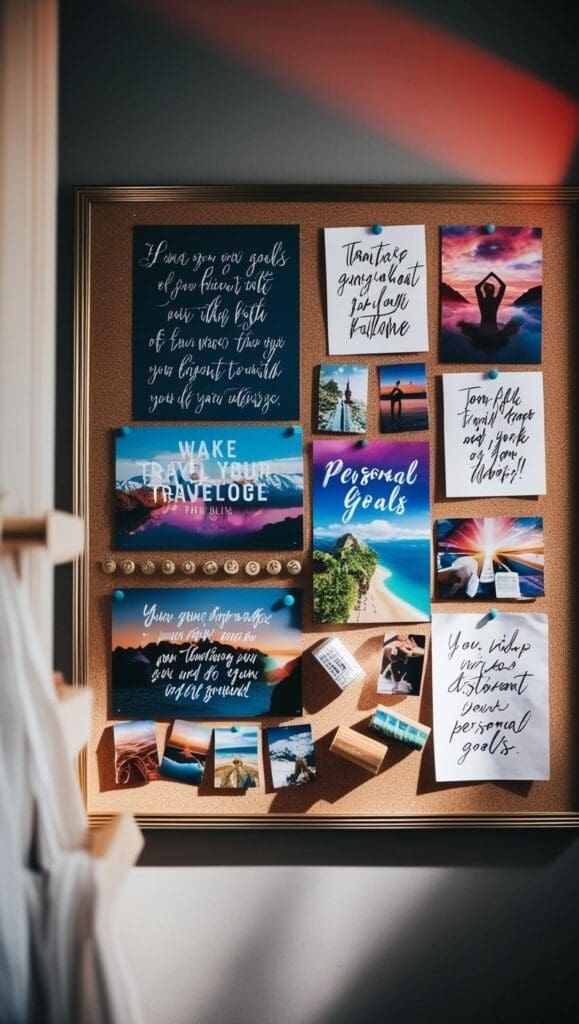
4. Coloring Mandalas: The Ultimate Stress Reliever
Mandalas offer an intricate design that invites you into a state of meditative coloring. As you fill in these patterns, you engage in a calming, mindful practice that eases anxiety and sharpens your focus. The process isn’t about perfection—it’s about taking a pause and enjoying the moment of creativity.
Getting Started:
- Choose Your Mandala: Download a free printable mandala or pick up a mandala coloring book.
- Gather Your Tools: Use colored pencils, gel pens, or markers to bring the designs to life.
- Embrace the Process: Focus on slow, mindful coloring without any pressure to finish quickly.
Mental Health Benefits:
- Enhances mindfulness and encourages relaxation
- Promotes deep focus and attention to the present moment
- Provides an immediate boost in mood through creative expression
Reflection Prompts
As you immerse yourself in coloring mandalas, consider these prompts to reflect on your experience and its impact on your well-being:
- Mindfulness and Presence:
- How did focusing on each intricate detail help you become more present?
- What did you notice about your thoughts or emotions as you engaged in the activity?
- Emotional Release:
- How did the rhythmic coloring process affect your mood?
- Were there moments when you felt a noticeable reduction in stress or anxiety?
- Creative Expression:
- In what ways did you personalize your mandala with color choices?
- How did the act of choosing and applying colors reflect your current state of mind?
- Focus and Flow:
- Did you experience a sense of flow while coloring? Describe how that felt.
- How did this focused activity influence your overall sense of well-being?
- Long-Term Impact:
- How might you incorporate mandala coloring into your regular routine for ongoing stress relief?
- What other mindful practices could complement this creative activity?
Use these prompts during or after your coloring session as journaling questions or mental checkpoints. They can help you uncover insights about your emotional state and reinforce the mental health benefits of this creative, mindful practice.oost
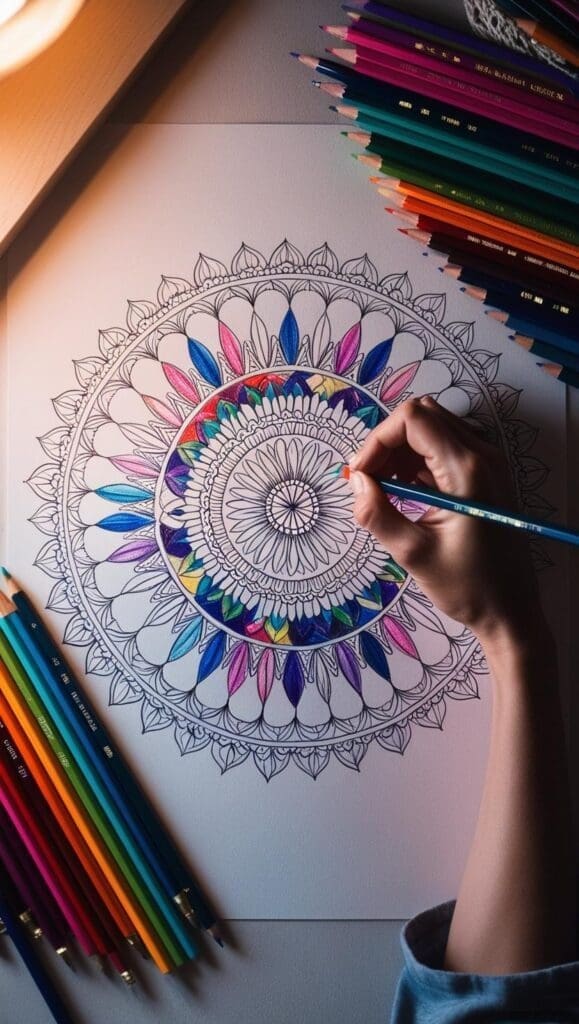
How to Make Creativity a Part of Your Mental Health Routine
Even if you’re not used to doing creative activities, you can easily integrate them into your self-care routine. Here’s how:
✅ Set aside 10-15 minutes daily for a creative activity—whether doodling, painting, or crafting.
✅ Keep a small sketchbook or coloring book handy for quick creative breaks.
✅ Use creativity as a coping tool—when feeling stressed, pick up a brush or pencil instead of scrolling through social media.
✅ Make it social! Try doing a craft night with friends or join an online art community.
Remember: Creativity isn’t about perfection—it’s about expression, joy, and mental well-being.
Give Yourself Permission to Create
Trying a creative activity—even if you don’t consider yourself “artistic”—can have huge benefits for your mental health. Whether you’re painting, drawing digitally, making a vision board, or coloring mandalas, the act of creating helps your mind relax, process emotions, and find joy in the moment.
So, grab a brush, a pen, or a tablet—and just start. Your mental health will thank you for it!
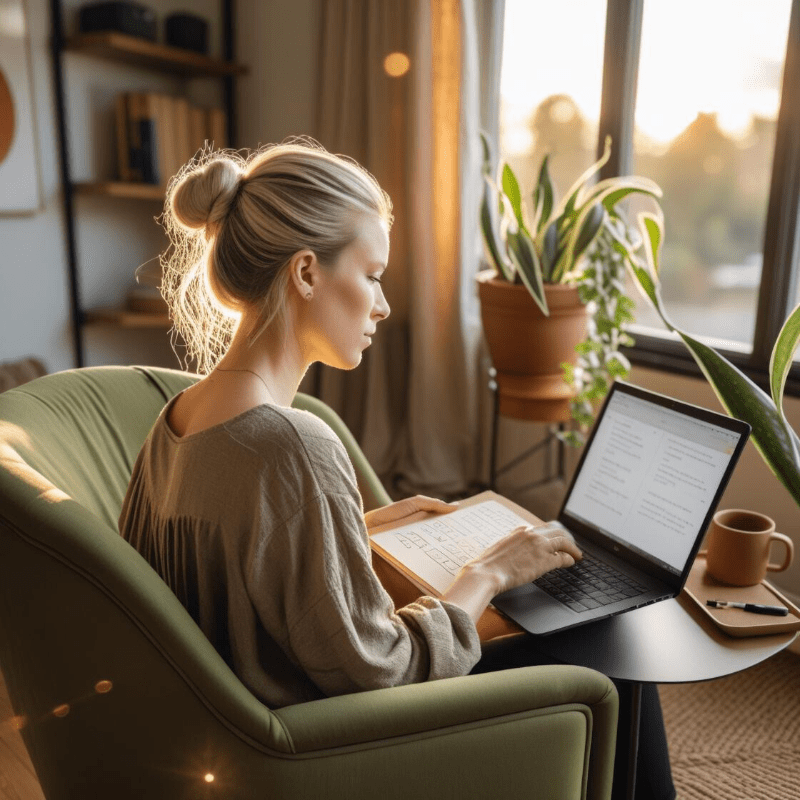
About the Author
Hi, I’m Eve, a former school counselor with a master’s degree in School Psychology and a passionate advocate for children and families navigating sensory challenges. As a mom of children with sensory sensitivities, I deeply understand the journey special-needs parents face, and I dedicate myself to researching and sharing practical solutions to help children thrive and feel comfortable in their bodies. My goal is also to empower counselors, therapists, and psychologists with creative strategies and supportive resources to enrich their everyday practice. When I’m not writing or exploring new therapeutic approaches, you’ll find me spending quality time with my family and continually seeking inspiration from everyday moments.

